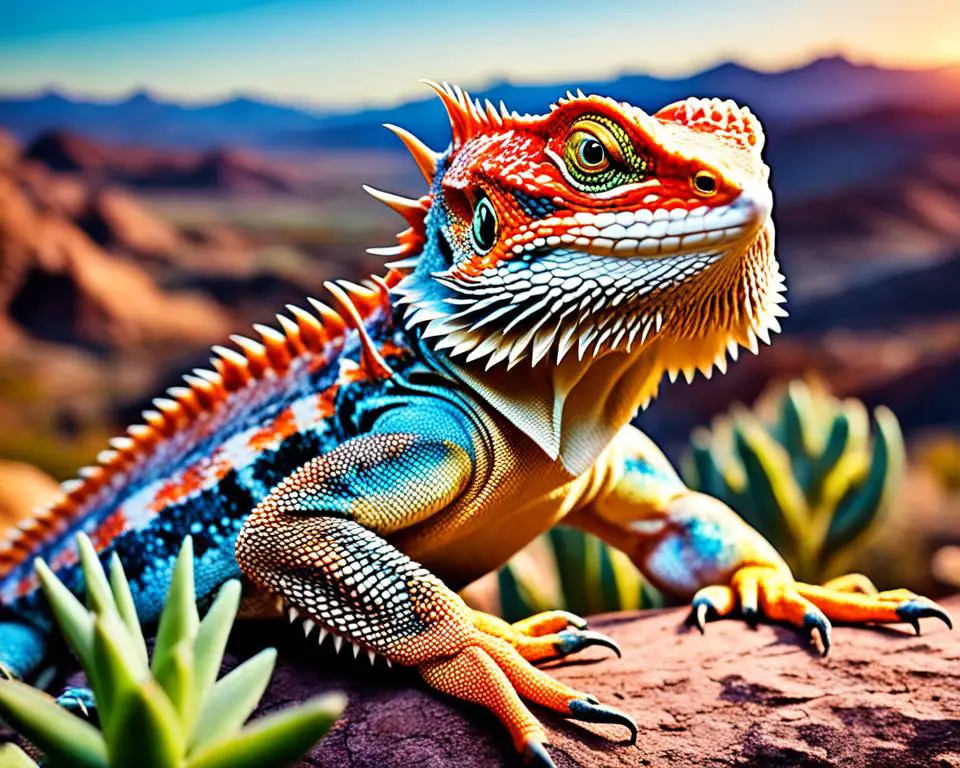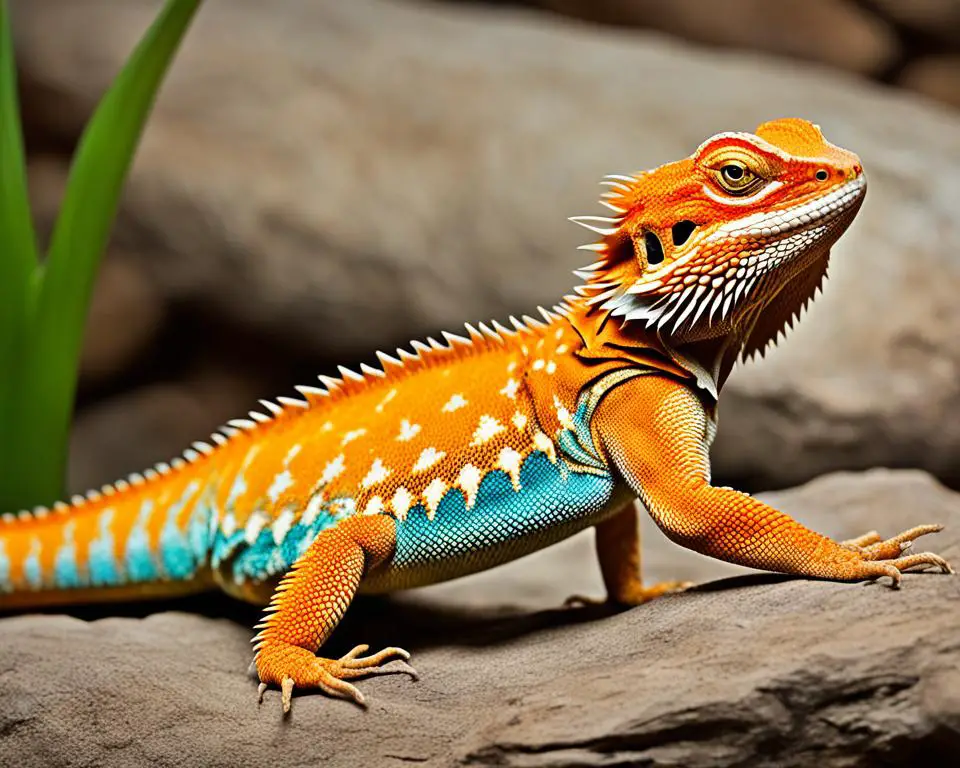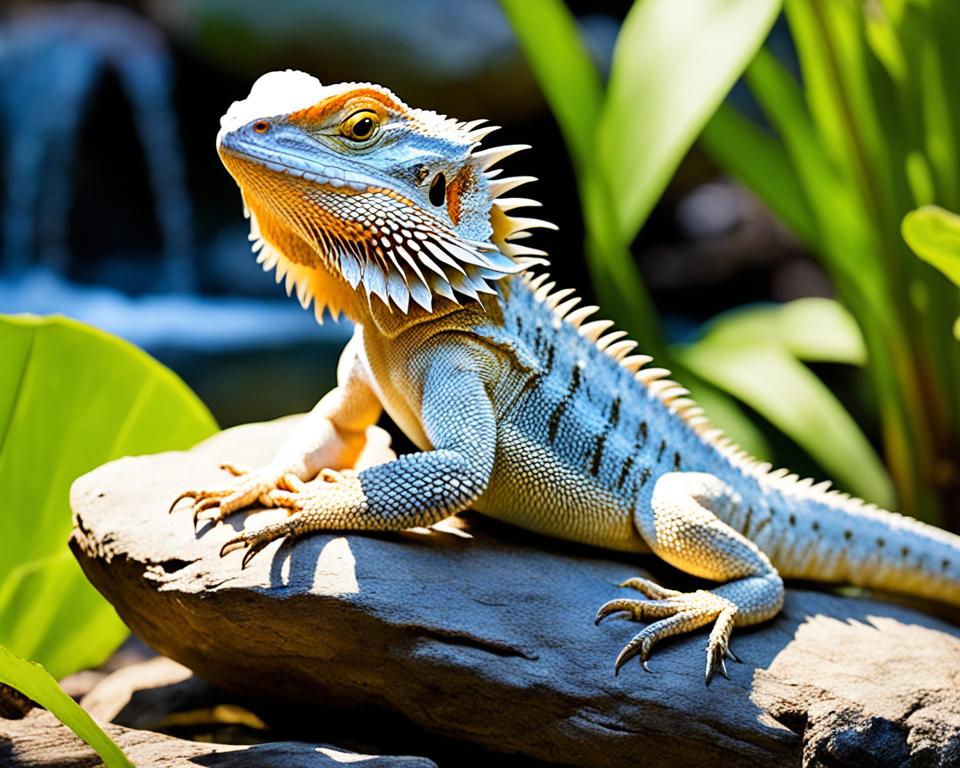When you have a bearded dragon as a pet, you quickly realize that they like to poop in their water bowl.
But do you know why they do this? Some people believe that dragons are doing this to clean themselves, but this isn’t actually the case. So, why do bearded dragons poop in their water bowl?
As a general rule, bearded dragons do not poop in their water bowl because they are dirty or unclean animals. In the wild, bearded dragons defecate into sand pits which helps to keep their environment clean.
However, when they are kept in captivity, many beardie owners provide them with a water bowl instead of a sand pit, leading the pet to mistake it for its bathroom. Since they cannot dig into the water bowl to bury their waste, they often end up pooping in the water.
But there’s a lot more to learn about why bearded dragons.
In this article, we’ll take a look at some of the most likely reasons your bearded dragon is pooping in his water and what you can do to help prevent it.
Let’s get started!
Why do bearded dragons poop in their water bowl?
There are a few potential reasons why your bearded dragon might be pooping in his water bowl.
- He simply doesn’t know any better. Baby bearded dragons often don’t have much experience using a water bowl and may not realize that it’s not meant for pooping in. If this is the case, your lizard will likely outgrow this behavior as he gets older and gains more experience.
- Your bearded dragon is trying to tell you something. Bearded dragons will often go to the bathroom in a separate area from where they eat and drink. If your lizard’s water bowl is located in his bathroom area, he may be trying to tell you that he needs a new, separate spot for his water.
- Furthermore, the bearded dragon is a very active lizard and will be moving around quite a bit. If you have a water bowl that has been sitting for a while, it may not be suitable to use as a water bowl for your bearded dragon.
What can I do to keep my bearded dragon from pooing in his water bowl?
If your bearded dragon is pooping in his water bowl, you can do a few things to help prevent it.
- First, make sure that the water bowl is located in a separate area from his bathroom. This will give him a designated spot to relieve himself and should help reduce the chances of him pooping in his water bowl.
- Second, you can try using a different type of water bowl. Some people find that using an automatic water dispenser with a comprehensive, shallow opening helps to reduce the chances of their lizard accidentally stepping in the water.
- Third, another potential reason why your bearded dragon is pooping in his water bowl is that the humidity level in his enclosure is too high. Bearded dragons come from arid environments and need a low-humidity habitat to stay healthy.
Why do bearded dragons like to sit in bowls of water?
Bearded dragons are naturally curious creatures and like to explore their surroundings. They also enjoy climbing on objects such as rocks or logs.
Note: While these activities are great for exercise and fun, they can pose a danger if your lizard climbs onto a hot surface or falls into a pool of water.
What happens when a bearded dragon poops too much?
Your bearded dragon may be pooping more frequently because it’s stressed out. This can be caused by a number of things, such as:
When your bearded dragon starts to poop more frequently, it’s important to try and determine the underlying cause. A number of possible factors can contribute to increased bowel movements in a bearded dragon, ranging from stress and illness to diet issues.
Let’s find out:
Temperature
As anyone who has ever kept bearded dragons knows, these fascinating creatures are thermoregulating animals. This means they rely on environmental cues such as temperature to regulate their body temperature.
If the temperature in their habitat is too hot or too cold, they may become stressed and begin to poop more frequently.
Because of this, it is important to monitor the temperature in your bearded dragon’s habitat and make adjustments to keep it at a comfortable level. For example, you might use a heat lamp to increase warmth or install an air conditioning unit to cool things down if necessary.
To keep your precious pet healthy and happy, be sure to pay close attention to its environment and make any necessary adjustments as needed.
Humidity levels
Bearded dragons are especially sensitive to changes in humidity. Too much moisture can cause stress and respiratory problems, while too little can cause dehydration and skin issues.
In order to maintain optimal humidity levels for your bearded dragon, it is important to evaluate the environment that they live in on a daily basis.
Generally speaking, the best conditions for these reptiles are humid but not overly wet or overly dry. For best results, try placing a hygrometer near your dragon’s cage so that you can continuously monitor the levels of moisture in their surroundings.
Additionally, it is important to keep an eye out for any signs of distress or discomfort with your pet.
Suppose your beardie starts panting more than usual or showing changes in appetite and behavior. In that case, this may be a sign that their environment is too dry and needs to be corrected immediately.
By doing regular assessments of your dragon’s habitat and taking steps to make adjustments wherever necessary, you can ensure that your pet always enjoys optimal comfort.
Tension
If your bearded dragon is pooping more frequently, it could be a sign of stress. Try to evaluate his environment and see if there are any changes that may be causing him stress.
For example, has he been introduced to any new pets lately? Or has there been a change in his daily routine? If so, try to revert back to his old routine and see if that helps.
This is very important, especially If you move your pet into a new home. Give it some time to acclimate to the change. This includes giving it access to familiar things like bedding, toys, and favorite foods.
Bearded dragons will eat less food if stressed. A bearded dragon owner says that his lizard eats about half as much food during stressful times. ‘He’ll go down to maybe 2 cups of food,’ he explains.
Unwell
Losing an appetite, acting sluggish, and experiencing frequent bathroom breaks can all be signs that your bearded dragon is unwell.
So, If you notice that he’s pooping more than usual and also has other symptoms such as lethargy, appetite loss, or changes in behavior, he may be ill, and you should take him to the vet for a check-up.
A visit to the vet will not only allow for a proper diagnosis but can also help to get your bearded dragon the treatment he needs to start feeling better.
Pregnancy
When a female bearded dragon shows signs of frequent pooping, it could be an indication that she is pregnant. This may seem strange since bearded dragons don’t typically poop frequently in the wild.
However, several factors can contribute to increased bowel movements in these lizards, including changes to their diet or metabolic status, internal parasites, or pregnancy.
To determine whether your female lizard is pregnant or not, it’s important to consult with a vet. Your vet can perform tests and physical exams to check for signs of pregnancy, like an enlarged abdomen and hormonal changes.
Additionally, they can closely monitor your reptile’s behavior, and if she lacks appetite, during this time, look for potential problems resulting from her pregnancy.
If your lizard is pregnant, it can be a stressful time for your pet. So, don’t hesitate to book an appointment with your vet as soon as possible to get clarity on this issue.
How do you make bearded dragon poop?
Bearded dragons are often kept as pets because of their cute appearance and friendly nature.
If your bearded dragon isn’t pooping regularly, it could be a sign of constipation. There are several things you can do to treat constipation in lizards.
1. Give your bearded dragon fresh water daily
If your bearded dragon isn’t getting enough water, his body won’t absorb as much nutrition from his food. It can also be caused by a diet that doesn’t contain the right nutrients for him.
Giving your bearded dragon fresh water daily is essential for its health. Make sure to change their water every day, and watch for signs of dehydration such as sunken eyes or a dry mouth.
Also, fresh fruits and vegetables will help to prevent him from becoming constipated.
2. Feed him smaller meals more frequently
His digestion will improve when your bearded dragon eats smaller meals more often. This is because smaller meals are easier to digest and provide the nutrients your dragon needs without putting strain on its digestive system.
Hence, don’t give him too many small meals at once. Instead, make them spaced out throughout the day.
3. Cage conditions
Bearded Dragons are very social animals and require plenty of space and stimulation. They thrive best in environments that provide ample room to move around, climb, burrow, and play.
A good cage setup is essential for keeping your bearded dragon healthy. You want to ensure it receives proper nutrition, gets plenty of exercises, and stays clean. Some things to consider include the following:
- Large cages with lots of climbing opportunities. A 120-gallon tank is a good size for one adult bearded dragon. Keep in mind that you’ll need a larger tank if you have more than one bearded dragon.
- Plenty of hiding places. Bearded dragons like to hide and feel safe. Provide them with plenty of hiding places, such as caves, logs, or plants.
- Lots of toys and objects to play with. Bearded dragons are curious creatures and love to explore. Give them plenty of toys and objects to play with, such as balls, tunnels, and hammocks.
- Fresh food and water daily. Bearded dragons need a diet of fresh fruits and vegetables. Feed them small meals several times a day.
- Proper lighting and temperature. Bearded dragons need a basking spot with temperatures between 95-110 degrees Fahrenheit and cooler spots around the cage to regulate body heat. Ensure to maintain their habitat temperatures at all times.
4. Hydration
Your bearded dragon must drink an average of 10 to 30 ml of water daily. This helps keep his intestines moving and prevents him from becoming constipated.
The amount of water that bearded dragons need to drink varies depending on their size and age, so there isin’t a one-size-fits-all quantity.
A healthy diet for a beardie should consist of different insects, fruits, and vegetables, which are also a source of water.
Should bearded dragons have water in their enclosure?
As a general rule, yes. That said, not all bearded dragons like to drink water. If your bearded dragon refuses to drink water, try giving him some wet foods instead.
Wet foods are made up of a mixture of fruit or vegetable juice and water. The liquid content makes these foods easier to digest than other types of food.
You can use any type of fruit or vegetable juice, but avoid using citrus juices.
What does the color of a bearded dragon’s poop mean?
The color of a bearded dragon’s poop can tell us a lot about the health and well-being of our pets.
Generally speaking, a healthy bearded dragon will produce firm and dark-colored feces. If the poop is loose or discolored, this may be an indication that something is wrong with your lizard.
But let’s take a closer look at what the different colors of bearded dragon poop mean:
Brown
This is normal brownish-colored poop. It indicates that your bearded dragon has been eating a balanced diet and getting enough calcium intake.
In fact, when it comes to your bearded dragon’s poop, one important thing to look for is color. Given that the healthy bearded dragon diet is high in vegetables and rich in calcium levels, a normal brownish-colored poop indicates that all is well.
So if you see brownish-colored poop in your bearded dragon’s litter box, take comfort in knowing that this is a sign of good health overall. And continue to feed your dragon a well-balanced diet rich in calcium intake, fruits, and veggies so that its poop stays consistently brown!
Yellow
If your bearded dragon produces yellow poop, he may not get enough calcium. Yellow-colored feces could indicate a problem with your bearded dragon’s gallbladder.
Green
Green poop is generally considered a positive color, representing growth, healing, and new beginnings. However, when applied to green poop, it can be somewhat alarming. Green poop typically indicates that your bearded dragon has eaten too many leafy greens.
This can cause diarrhea and stomach upset, such as cramping, bloating, and nausea. If you notice that your bearded dragon has a green-colored stool, try reducing its intake of leafy greens or increasing its water intake to help flush out its digestive tract.
White
White feces is often caused by dehydration. If your bearded dragon’s poop is white, it means he isn’t getting enough water. Make sure to change his water every day and watch for signs of dehydration, such as sunken eyes or a wrinkly appearance.
Summary
Before we move on to the conclusion, we’ve summarized this article into a short list of key points for you to remember:
- Remember that you shouldn’t feed your bearded dragon all at once. Instead, give him small portions throughout the day.
- Give him fresh fruits and vegetables, along with some insects.
- Make sure to provide a safe environment for your bearded dragon, where he can get plenty of sunlight, exercise, and proper nutrition.
- Remember to clean out his tank regularly.
- Keep an eye on your bearded dragon’s poop. If it starts looking green or yellow, make sure to check if he’s drinking enough water.
Conclusion
In this article, we’ve learned about the basics of bearded dragon care. We’ve also covered some important things to keep in mind, such as their diet, hydration, and lighting needs.
Finally, we’ve looked at what the different colors of bearded dragon poop might mean and how they can give us clues about your pet’s overall health.
In conclusion, we hope that you’ll find this information useful when caring for your bearded dragon.
Good luck with your new pet!
Want to learn more about bearded dragons?
Ready to boost your knowledge about your favorite reptile? If so, check out our other articles below:
- What Bugs Can a Bearded Dragon Eat? ( 7 Must-Have Bugs)
- How Many Crickets Should a Bearded Baby Dragon Eat? (Explained)
- 9 Ways How to Tell If a Bearded Dragon is Scared (Solved)





